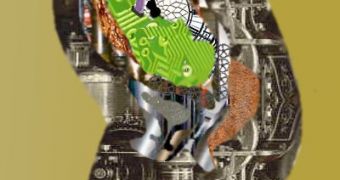Scientists have created a system of blood vessels that interacts with the tissue surrounding an implanted device, prevents the formation of the scar tissue around it and preserves its longevity and function, a new study finds.
Researchers of the University of Louisville/ Jewish Hospital's Cardiovascular Innovation Institute (CII) found a way of solving the problem of scars around implanted devices by "pre-vascularizing" the device just prior to implantation.
Stuart Williams, PhD, scientific director of the CII and a senior investigator on the study said that “One of the biggest problems with any kind of implanted device, such as pacemaker, a chemotherapy port or the glucose sensors necessary to monitor blood sugar levels in diabetic patients, is the body's natural reaction to recognize it as foreign and form a scar around it.”
As scars have very little blood flow, the connection between the body and the device is affected and the efficiency of the device over time can decrease, endangering the life of the patient.
The pre-vascularization is called a microvascular construct (MVC), formed by small blood vessel fragments suspended in a collagen gel.
Scientists made a comparison between the tissue surrounding a bare expanded polytetrafluoroethylene material (implanted biomaterial many devices are made of) embedded in collagen alone to one embedded in collagen and the MVC, and observed that the last combination was better for the circulation in the area around the implant.
James Hoying, PhD, director of cardiovascular therapeutics at the CII and also a senior investigator on this study, said that “This study built on our earlier work that showed that this material, what we call an MVC, stimulates circulation and prevents scarring when implanted in the body, in animal models.”
“We wanted to next see if we could maintain that circulation in order to prevent scarring over the long term and thus prolong the function of any number of implanted devices.”
“We found that the presence of the MVCs and collagen altered the way tissue formed around the implants, restricting the formation of scar tissue because there was so much blood vessel activity,” added Williams.
“The presence of the MVCs and collagen also reduced the number of white blood cells that stimulate inflammation, where the device was implanted, [and] the vessels associated with the implant were seen to be capable of sustainable blood delivery over time.”
The team now works on a way to bringing the technology to patients, through an operating room-compatible device.
“This could have implications for patients who have any number of implantable devices, from those on dialysis to patients with devices that help failing hearts to function, to those receiving chemotherapy, catheters and multiple other indications,” said Williams.
The study was funded buy the National Institutes of Health and was published today in the online version of the Journal of Biomedical Materials.

 14 DAY TRIAL //
14 DAY TRIAL //